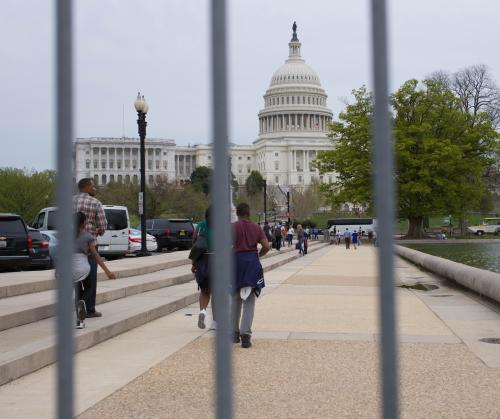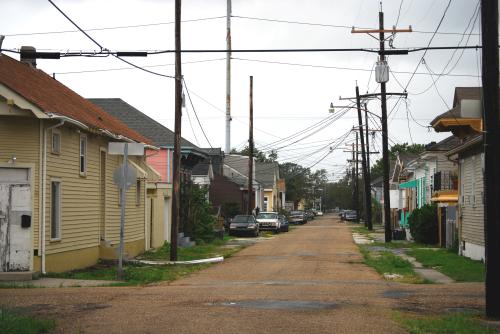It is well-known that Black households hold significantly less wealth than white households in the United States. What may be less well-known is that this difference holds even after controlling for household characteristics and that – despite long-term gains by Black Americans in education and income in absolute terms and relative to whites – the wealth gap appears to be growing over time.
In recent work with several co-authors, I examine wealth differences between Black and white households and present results that control for household income, and the head of the household’s age, educational attainment, marital status, and sex (if single). We use data from the 1989 to 2016 waves of the Federal Reserve’s Survey of Consumer Finances, widely considered to be the most comprehensive survey of household wealth in the United States.
Consistent with an extensive literature, we show that, on average, Black households had less wealth than white households. In 2016, for example, the average Black household held $124,000 (or 54 percent) less wealth than the average white household. The median or typical Black household reported about $43,000 (or 56 percent) less wealth than the median white household reported. Again, these results control for household characteristics.
Black wealth falling further behind
Figure 1 shows the average and median racial wealth gap over time (The point estimates are shown by the line; the 2-standard-deviation range is shown by the band.) The wealth gap has never consistently decreased and since 2010, it has increased. The rise in median wealth gaps indicates that widening wealth disparities are not simply driven by outliers at the top or bottom of the wealth distribution. By comparison, differences between non-Hispanic white and Hispanic households were smaller than differences between Black and white households and in many specifications were not statistically different from zero.

These findings should be qualified carefully. They do not determine a causal relationship between racial discrimination and wealth disparities. Racial discrimination in all its forms could account for more or less than differences in wealth reported above.
The wealth gap is not just an income story
Nevertheless, placed in context, our results are troubling. Previous research by Harvard economist Raj Chetty and co-authors finds that Black households have lower income, on average, than white households, and that, given parental income, Black children have lower rates of upward mobility and higher rates of downward mobility than white children. Their results suggest that closing the income gap over time between whites and Black households will be difficult.
Our results imply that even if Black-white gaps in income (and other household characteristics like educational attainment) were eliminated, there would still be a substantial disparity in wealth. Indeed, even given substantial gains by Black households in educational achievement and income (though not when considering those out of work) over the past 30 years, the wealth differential appears to have widened.
Solutions: Reparations, education, housing, savings, baby bonds
Without cultural change, it is hard to see how public policies alone will be able to close the entire Black-white wealth gap. Nevertheless, reforms could reduce the net worth differential significantly. Policy reform should aim to both redress injustices committed in the past and to provide equal opportunity for all today.
First, we need to consider the ways to address a national history (and disgrace) of structural racism that has denied Black households access to resources. Reparations to Black Americans have been proposed since the Reconstruction Era—and very recently by William “Sandy” Darity and Kirsten Mullen. Reparations are not novel; notably, Japanese Americans who were forced into internment camps during World War II received compensation in response to a clear societal wrong. Reparations can help Black households build wealth through direct payments and access to mechanisms of wealth accumulation. Since even achieving equality of opportunity going forward will not address the intergenerational disadvantages that Black households already face, reparations are a source of racial justice and an equitable policy.
Policies that reduce the cost of college attendance and student loans could also increase opportunities for wealth accumulation for Black households. Likewise, policy makers should correct existing homeownership policies that have disproportionately benefited white households and have implicitly and explicitly restricted Black homeownership and create new policies to support Black homebuyers. Creating automatic IRAs and making the Saver’s Credit refundable would provide workers without employer-sponsored retirement benefits (who are disproportionately Black) access to tax-advantaged retirement savings and offset the cost of saving for low-income workers, reducing the wealth gap between elderly white and Black Americans.
All these policies, however, would affect people after they enter adulthood. By that point many of the inequalities related to human capital and financial wealth have already taken effect. To affect wealth accumulation more durably, earlier life interventions are needed. These include a strong social safety net, including the availability of high-quality, affordable child care, employment and training programs, and baby bonds.
These proposals only scratch the surface of possible reforms. But they illustrate both the difficulty of eliminating the Black-white wealth gap, as well as the many ways policy could help reduce the gap.
I am grateful to Grace Enda for outstanding research assistance.






Commentary
How to build Black wealth
July 6, 2020